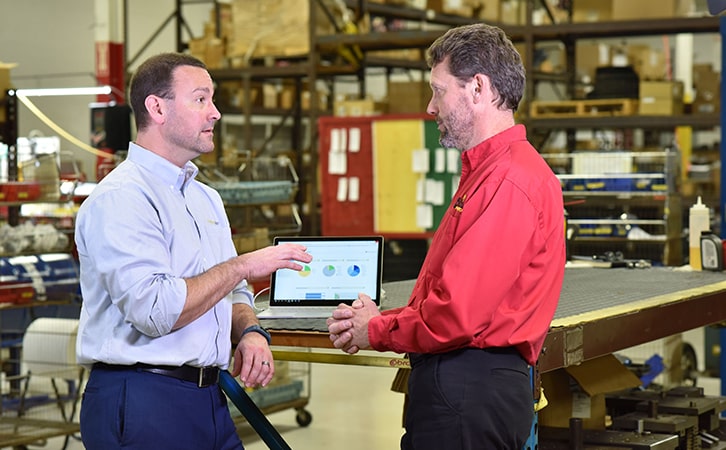Participatory ergonomics (PE) programs are a common way to reduce musculoskeletal disorders (MSDs) in the workplace. These programs generally involve developing an ergonomics team that includes members from various departments and levels within the organization. But most importantly, they include those who have first-hand experience with the ergonomic issues: the workers. These teams also include workers and stakeholders in the problem-solving and decision-making process.
Properly implemented PE programs are associated with positive health outcomes, including the reduction in MSD-related symptoms, MSD injuries, workers’ compensation claims, and lost days from work or sickness absence due to MSDs (Rivilis et al., 2008). More recently, Tompa et al. (2013) provided additional evidence that PE interventions (over a two-year period) are effective and are associated with the following health and performance outcomes, as well as economic impact:
- First aid cases reduced by 35%
- Modified duty cases reduced by 50%
- Casual absenteeism reduced by 23%
- Long-term illness absences reduced by 75%
- Duration of long-term illness absences reduced by 93%
- First-time quality production increased by 1%
- Productivity efficiency increased by 5%
- Economic benefit-to-cost ratio, based on costs and consequences, is 5.5 to 1
The key to any successful PE program is to use an evidence-based approach. The 9 elements of a successful PE program are as follows (van Eerd et al., 2010):
- Gain support for the program from the entire organization (leadership, management, supervisors, and workers).
- Establish an advisory or steering committee to guide the process. Include members from various departments and levels within the organization.
- Hold management accountable for providing adequate resources, including people, funds, and time.
- Create small teams of the right people to drive the intervention. The right people include a specialist (ergonomist) to initiate and facilitate the process and, most importantly, the supervisor and workers.
- Provide team members with the organizational knowledge on how to get things done within their organization and company culture.
- Provide the right people with the right ergonomics training for their workplace risks.
- Establish clear responsibilities. It is critical that the worker’s responsibilities include identifying problems, developing solutions, and implementing change.
- Make all decisions using group consultation. The group, including workers and senior management (not just the specialist), must be involved in the assessment and solution.
- Encourage active communication among all members of the team throughout the entire intervention.
Make sure your PE program includes these elements to ensure a successful intervention. This way, you’ll have the best chance to achieve positive health and performance outcomes, as well as the economic impact you desire.
References:
Rivilis, I., Van Eerd, D., Cullen, K., Cole, D.C., Irvin, E., Tyson, J., and Mahood, Q. (2008). Effectiveness of participatory ergonomic interventions on health outcomes: a systematic review. Applied Ergonomics 2008, May;39(3):342-58.
Tompa, E., Dolinschi, R., and Natale, J. (2013). Economic evaluation of a participatory ergonomics intervention in a textile plant. Applied Ergonomics 2013, May;44(3):480-7. (2014 Applied Ergonomics Award for the best paper)
van Eerd, D., Cole, D., Irvin, E., Mahood, Q., Keown, K., Theberge, N., Village, J., St Vincent, M., and Cullen, K. (2010). Process and implementation of participatory ergonomic interventions: a systematic review. Ergonomics 2010, Oct;53(10):1153-66.
